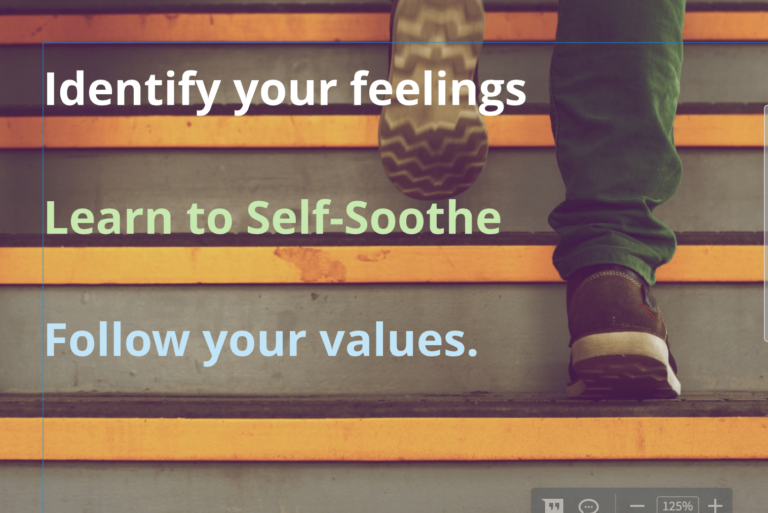
Emotional regulation seems like a complicated process. But in fact, it is something that we all use every day. Consider these examples where self-regulation may be helpful:
- Situation 1: You are driving home from work, and a car cuts you off in traffic, proceeding to drive very slowly in the lane in front of you. You are frustrated and angry. How do you respond?
- Situation 2: Your younger sibling takes the television remote from you and hides it so you can’t turn on the television. You are very frustrated, and your parents are nowhere to be found. What do you do?
“Emotion regulation is a set of skills that help keep your emotional system healthy and functioning.”
Marsha Linehan
Steps to Emotional Regulation

1. Practice identifying your feelings and where you feel them in your body.
Check in with yourself a few times a day. Ask yourself to name your feelings and maybe even rate them from 1-10. Then notice your body. Where are you tense or tight? Does anything in your body hurt? Anything uncomfortable? Maybe you are just feeling more tired than normal. Note that. You may just label these to yourself, by saying something like, “This is anger, or I’m feeling upset.”
2. Practice self-soothing.
Kristin Neff and Chris Germer, in their work on self-compassion, suggest putting a hand on your chest or the part of your body that feels stressed in a calming or comforting way. Then, remind yourself kindly that everyone feels like this at some point. All humans have strong or difficult emotions that come up from time to time. This feelings are part of being alive. Finally, offer some comfort to yourself. You may say something like, “It will be ok,” or “I’m here for you,” or “You’ve got this.”
Ask yourself, “What would I tell someone that I love about this situation?” If you are like the person who is experiencing traffic stress in situation 1 above, your answer might be, “Take a few breaths, and keep yourself, your passengers, and the other car as safe as you can.” Then, take your own advice!
3. The last part of emotional regulation is following your values.
Remember who you want to be. Maybe you want to value your family, your life’s work, and your integrity. If these are true, consider what actions bring you closer or farther from these goals. If you realize that you are behaving in ways that are inconsistent with your values, consider other actions that reflect who you want to be. For example, if you were cut off in traffic, you may choose to slow down, and give the other driver a wide berth so you or your family does not get injured. Our values serve as our compass. When we follow them, our lives often have more meaning and satisfaction.
Emotional regulation takes practice.
If you are a parent, practicing “stop-think skills” with your child can be a way of teaching emotional regulation.
Ask them to come up with a stop-think example every day. It can be a time that they used a “stop and think” skill well (that is great!). It can also be a time where they COULD of used a stop-think skill, but did not.
If they can’t come up with a situation, role-play with them. Pretend something emotionally challenging happened, and practice together how they could handle it. Reward them with something small for role-playing or practicing. Help them to learn why it is helpful for them. Your efforts will take time, but they will pay off greatly.
If you are adult, practice is still important.
At the end of the day, maybe take inventory on your stress, and how you did managing your distress. If there were hard parts, consider where you could have better used emotional regulation skills. If it is too much to do all at once, commit to trying to just notice your feelings for a week, and then add the next steps as you are ready. The more you practice, the easier it will become.
It can also be very helpful to involve a psychologist or mental health therapist when learning and practicing these skills. We are here to help.
![]()
